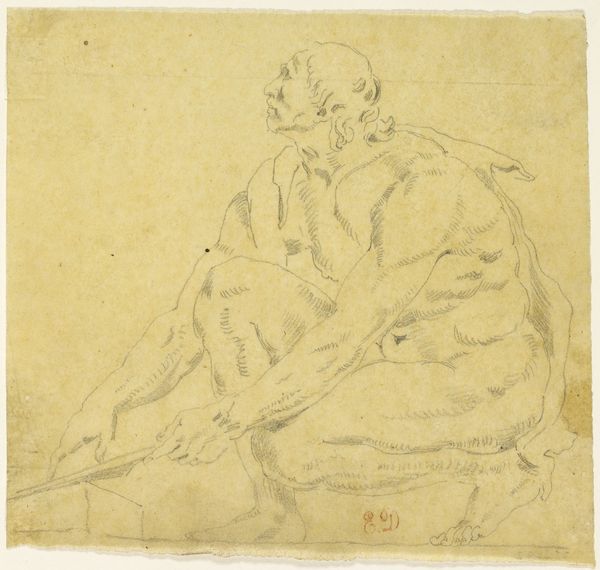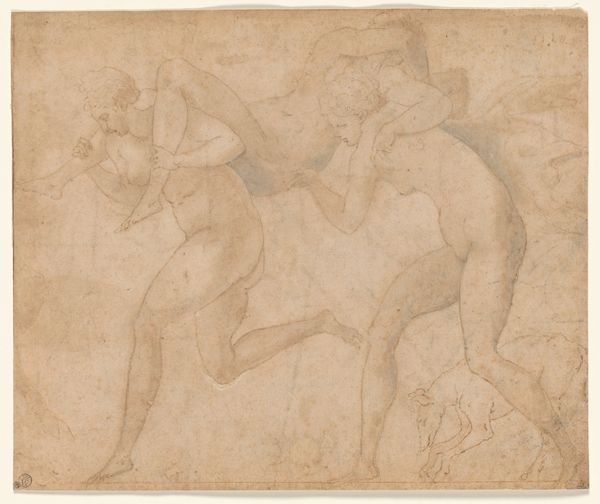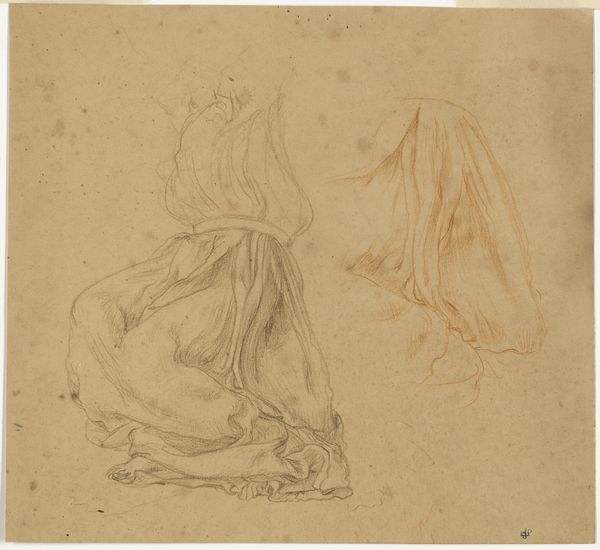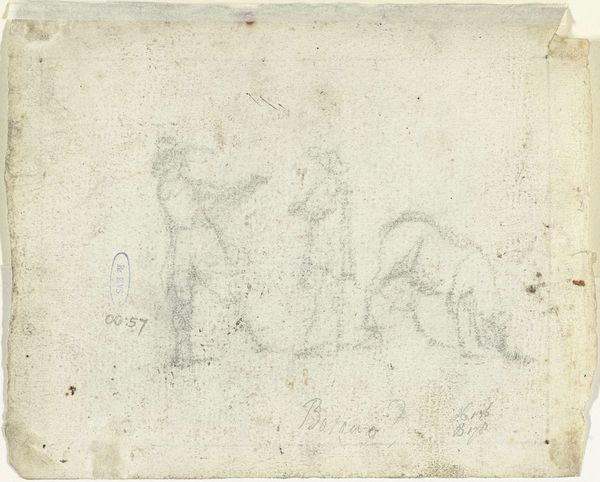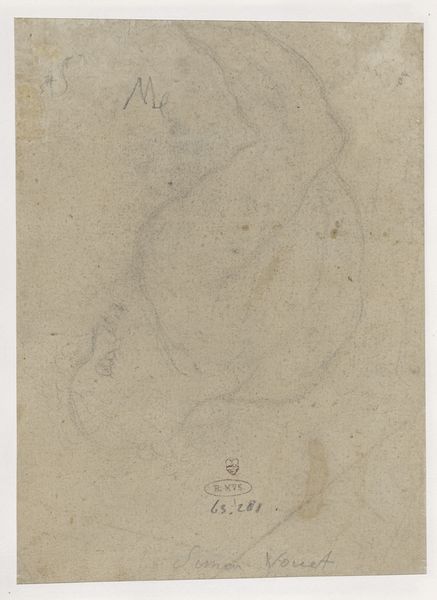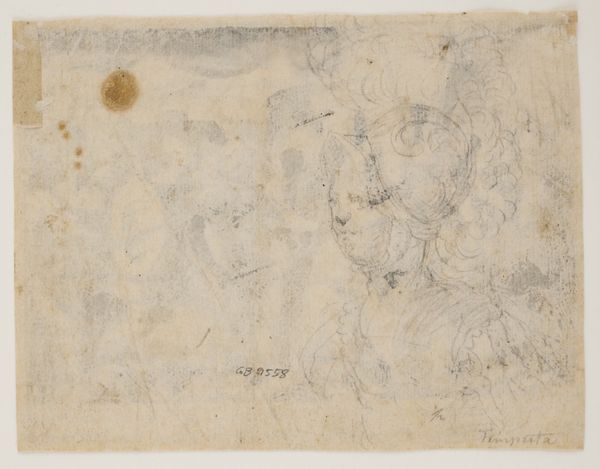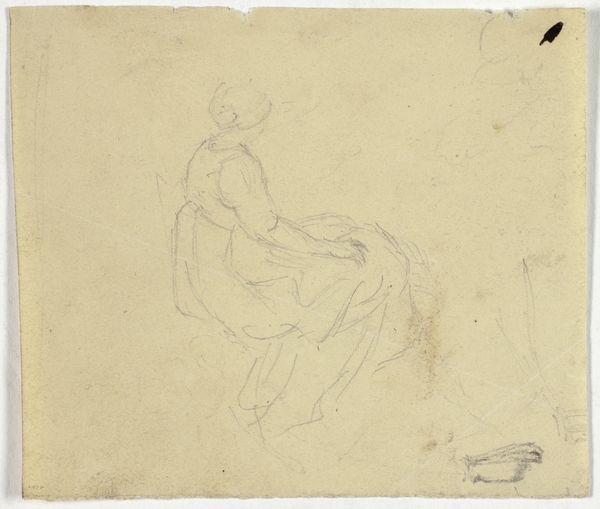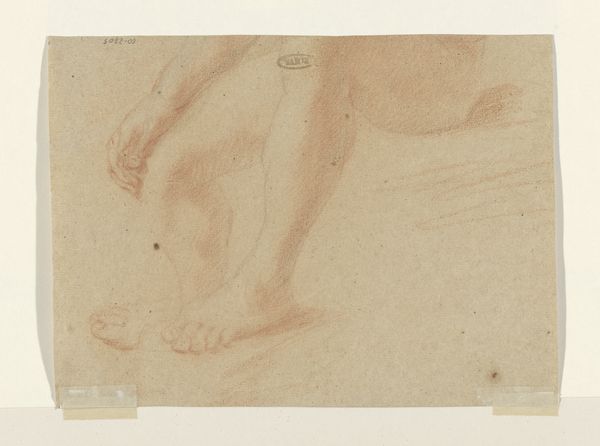
drawing, pencil, graphite
#
drawing
#
baroque
#
pencil sketch
#
landscape
#
charcoal drawing
#
figuration
#
pencil
#
graphite
#
nude
Dimensions: 235 mm (height) x 343 mm (width) (bladmaal)
Marcus Tuscher created this drawing of a reclining river god with graphite on paper. The qualities of the graphite are important here. See how it allows for a range of tones, from the softest shadow to the sharper lines which define the figure. The artist has skillfully leveraged the qualities of this modest material, building up the figure with networks of fine lines. Consider, too, the social context of this artwork's creation. In the 18th century, graphite was becoming more readily available, thanks to the rise of industrial mining, and paper making was transitioning to a more industrialized form. As these materials became more accessible and affordable, artists were enabled to use drawing as a primary means of expression. So while the subject of this drawing may seem timeless – harkening back to classical antiquity – its very existence speaks to a specific moment in the history of materials, labor, and creative production. By attending to these factors, we can expand our understanding of the artwork, and challenge traditional distinctions between fine art and craft.
Comments
No comments
Be the first to comment and join the conversation on the ultimate creative platform.



